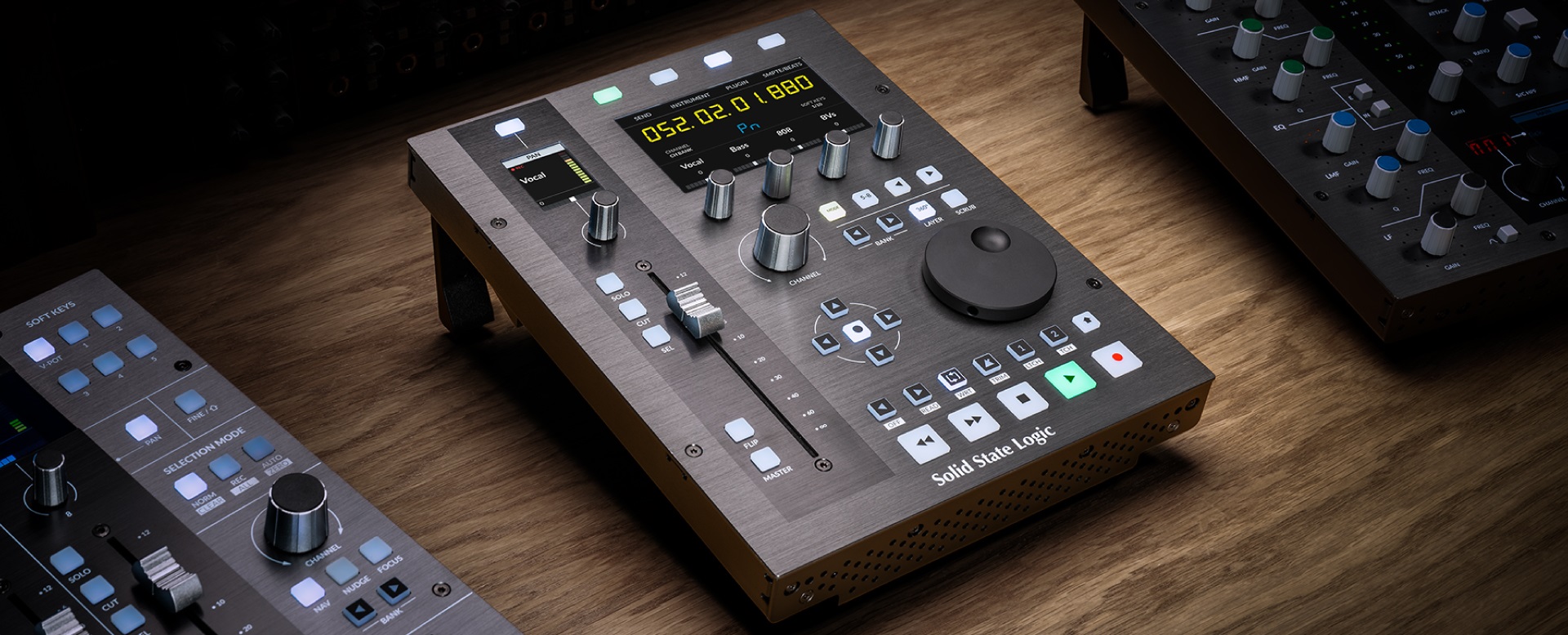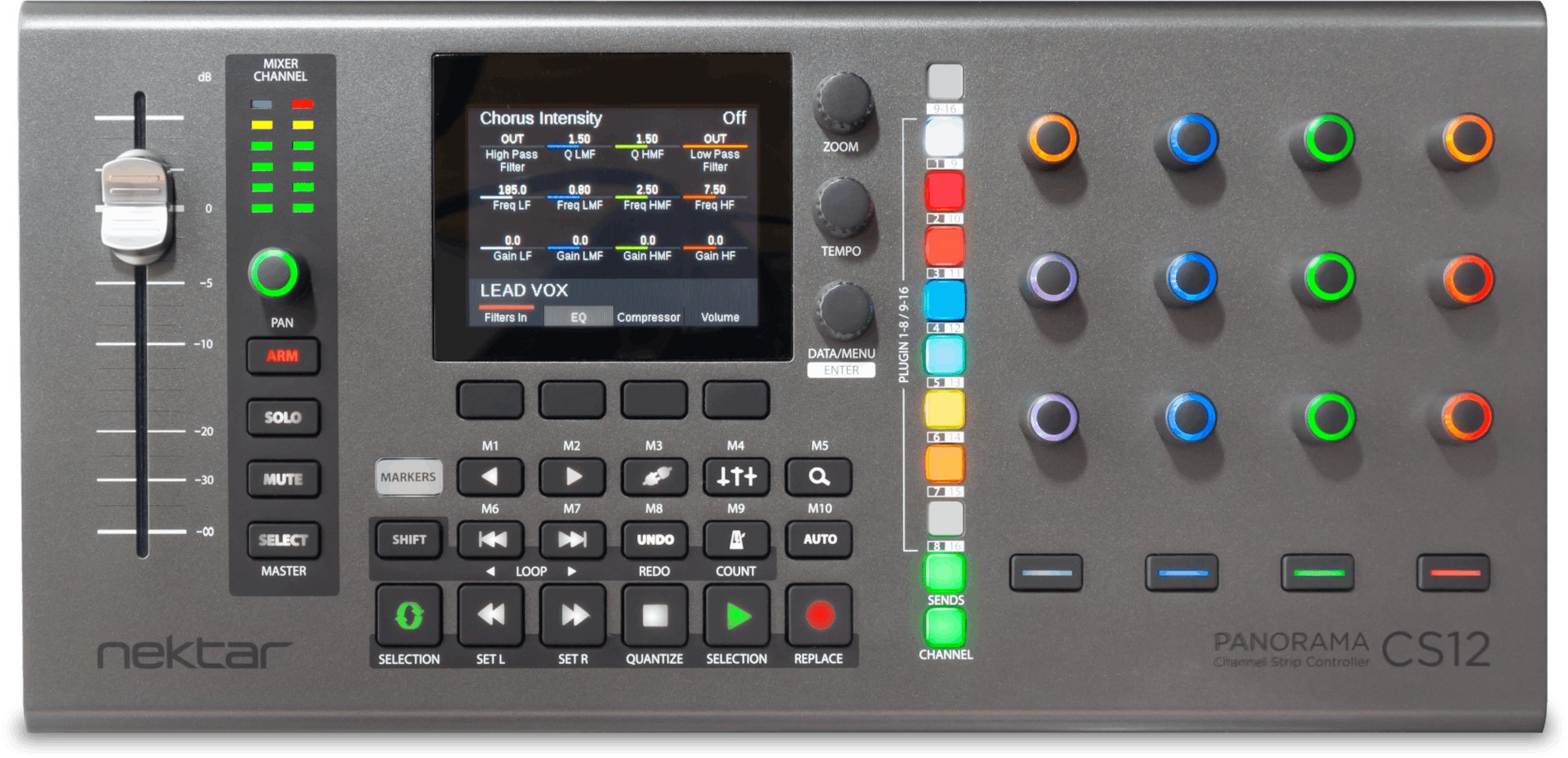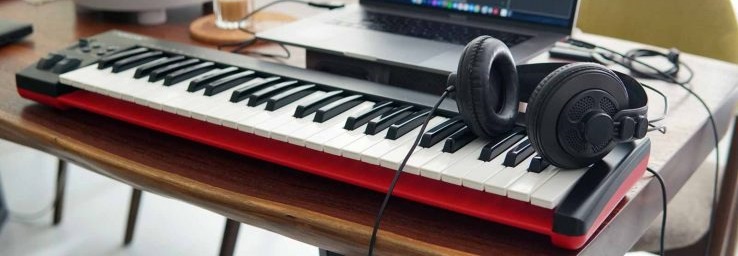- What is a DAW Controller?
- Why Should You Use a DAW Controller?
- DAW Controller vs. Keyboard & Mouse
- DAW Controller vs. Analogue Mixer
- The Nektar CS12 – What can a DAW controller bring to your mixing workflow?
- Who are Nektar?
- What Exactly is the Nektar CS12?
- Final Thoughts
- Useful Links!
Tired of fiddling with a mouse and staring at a screen when you’re mixing? Us too.
Enter the DAW controller, bringing physical feel and intuitive efficiency to your digital mixes. But are they worth the fuss? Let’s explore what DAW controllers can really do and take a closer look at one of the most promising options available…
What is a DAW Controller?
A DAW controller, short for Digital Audio Workstation controller, is a dedicated piece of hardware that gives you hands-on control over your music production software. Think of it as a physical extension of your DAW. Instead of clicking endlessly with a mouse or trying to learn a myriad of complex keyboard shortcuts, a DAW controller puts essential functions at your fingertips in a much more tactile, instinctive format.
The controller’s faders, knobs and buttons are mapped to functions inside your DAW, things like transport controls (play, stop, record), volume, solo, mute, channel selection, pan and tempo control. Many controllers go much deeper, letting you write automation, have precise control over your effects or plugin parameters and much more.

In practice, it feels a bit like sitting behind a traditional mixing desk. You’re no longer tethered to a screen in the same way and instead you can engage more physically with your music. That tactile connection changes how you interact with your tracks – it’s more intuitive, more responsive, and can massively speed up your workflow.
Controllers range from minimal units with a few faders and shortcut buttons, to advanced surfaces with motorised faders, LED displays, and plugin control capabilities. Most connect via USB and use common communication protocols, making them compatible with a range of popular DAWs.
So, in a nutshell: a DAW controller brings back the physical, expressive side of music-making in a digital world. It puts your hands – quite literally – on the mix.
Browse DAW Controllers & Control Surfaces
Why Should You Use a DAW Controller?
If you spend any time producing, mixing, or editing music inside a DAW, adding a controller to your setup can be a game-changer.
The primary benefit of a DAW controller is how it speeds up your mixing workflow. Instead of dragging your mouse around the screen or navigating through dropdown menus, many actions can be performed with dedicated buttons. It can take months or even years to learn keyboard shortcuts for your DAW, but a DAW controller can give you those shortcuts and more straight away, taking very little time to utilise efficiently.
Actions that usually take multiple clicks, like arming a track for recording, adjusting plugin parameters, or jumping between tracks, are often just one button press away.
But it’s not just about efficiency. There’s a creative angle too. A controller helps you interact with your music in a more fluid, expressive way. For example, you can write live automation with your hands in real time – performing fades, filter sweeps, or effect changes with a natural, musical feel. It’s like playing your DAW as an instrument.
A less-commonly mentioned benefit is how it helps your focus. With a controller in front of you, you spend less time staring at the screen and can rely more on your ears, your touch, and your instincts. That shift can do wonders for the quality of your mixes and (just as importantly) your enjoyment of the process.
DAW Controller vs. Keyboard & Mouse
The keyboard and mouse have been the standard tools for music production since the rise of DAWs. They’re precise, familiar, and perfectly capable. But they’re not always the most inspiring way to make music, nor the most efficient.
Ultimately, the keyboard and mouse were never designed for music production – they were the peripherals already in use by PC owners and so music producers had to adapt to use them too.
In contrast, when you’re using a controller, you’re no longer dragging tiny faders on-screen or opening menus to find what you need. The controller is purpose-built for your DAW and gives you the controls you regularly use right there at your fingertips. Beyond just the buttons and shortcuts, the ability to use a physical fader or potentiometer to control levels, program automation or precisely adjust effects parameters connects you to the music in a more immediate way. It’s tactile, instinctive, and often faster – especially once muscle memory kicks in.
Try automating a filter sweep with a mouse. Now try doing the same thing by physically turning a knob in real time. The second approach feels more natural and expressive. You can feel the movement, and that translates into your mix.
Of course, a keyboard and mouse aren’t going away entirely. They still have their place and in fact most controller users often utilise a hybrid setup – using the controller for where it really shines but still having the mouse and keyboard to hand for other finnicky processes or operations that are just easier to click through as normal.
DAW Controller vs. Analogue Mixer
Of course, this isn’t a debate of analogue vs digital mixing in general – both have their advantages and whichever method you prefer is completely up to you. But how does a DAW controller compare to an analogue mixing desk in terms of simple practicality and your workflow?
Ultimately, a DAW controller is the closest thing to mixing on an analogue mixer in terms of tactile feel, your ability to manipulate sounds in an instinctive way, and the speed of physical mixing. Yet it still allows for all the benefits of using a modern DAW: the endless list of plugins, the efficiency, consistency and ease of working in a digital format. Plus, of course, taking up just a fraction of the space (and cost!).
It’s important to remember that a controller only acts as a tool for interacting with your DAW, so the sounds that are possible and overall result of the final track won’t be any different – it’s still a digital process, not an analogue one. But the experience and ability to interact with your mix through feel and instinct – that’s what makes mixing with a DAW controller so special. They unlock the experience and interaction of analogue mixing with the versatility and consistent sound of the digital age.
There are also some handy advantages over an analogue mixer. Many modern DAW controllers (like the Nektar Panorama CS12, which we’ll explore later) offer motorised faders that sync with your session. You can move from one track to another and watch the fader quickly move to match your DAW’s current volume level.
With an analogue mixer you’re limited to the physical layout in front of you. Want to adjust channel 16? Time to scoot your chair along to reach it. Want to adjust a specific effect? Hop on over to that module. A DAW controller can seamlessly switch to the channel or plugin straight away just within the single unit.
The Nektar CS12 – What can a DAW controller bring to your mixing workflow?
While many DAW controllers on the market offer some combination of faders, pots, and transport controls, the real difference lies in how seamlessly these tools integrate into your creative habits. A good controller should feel like an extension of your thought process – intuitive enough to fade into the background, yet powerful enough to keep up with the most demanding sessions. This is where the design philosophy behind certain modern controllers starts to diverge. Instead of simply recreating familiar hardware workflows, some newer devices aim to reimagine the studio experience altogether, placing tactile control at the centre of a fluid, software-driven environment.

Among these, one device has been earning a reputation for striking the right balance: not just offering hands-on control but doing so with a degree of refinement and purpose-built functionality for which many producers have been asking for years.
Nektar’s CS12 is an incredible example of how a DAW controller can synergise with your DAW and give you the tactile control and efficiency to boost your mixing sessions. Let’s take a look at what it is, why it was created and how it might just be the best new addition for your home studio.
Who are Nektar?
Founded in 2009, Nektar traditionally focused on keyboard controllers with DAW integration, becoming well known for prioritising customer control and customisation. With a focus on bridging the gap between software and hardware, Nektar have carved out a name for themselves by offering controllers that enhance creativity and streamline complex DAW environments. Their standout feature across product lines is deep DAW integration – their devices are specifically built with popular DAWs in mind, seamlessly synergising with them rather than just functioning alongside them.

The CS12 is a culmination of the mapping technology and developments in intuitive control that Nektar have developed over their previous product lines, leading to the controller that many home producers have been looking for – and deserve!
What Exactly is the Nektar CS12?
The Panorama CS12 is a compact but powerful DAW channel strip controller, purpose-built for hands-on mixing, plugin control, and navigation within Logic Pro, Cubase, and Nuendo. Designed with free-flowing music creation in mind, it provides real-time tactile control over faders, panning, sends, plugins, transport functions, and automation, all without the need for manual mapping.
At the heart of the unit is a 100mm motorised fader supported by a colourful TFT display, 12 RGB-lit pots, a 6-segment LED meter, 18 function/navigation buttons, and 11 section-selection buttons. The unit is optimized for a left-hand fader/right-hand control workflow and was designed so that anyone who’s already familiar with Logic or a similar DAW should feel comfortable with the layout straight away.
This controller isn’t a generic USB surface – it’s deeply integrated into the DAW via Nektar’s ControlCore system, allowing you to manipulate third-party plugins and native DAW elements straight away.
If you’re looking to upgrade your workflow and make a change from staring at a screen and a cursor in your sessions, the CS12 is an incredible new piece of kit to let you do just that, with all the mapping and setup done to let your creativity take the wheel straight away.
Nektar C12 Key Features
- Motorised fader provides real-time feedback and control over channel levels or plugin parameters with support for live automation writing.
- Includes a ‘magnifier mode’ for ultra-fine parameter control, allowing for delicate tweaks not easily achieved with a mouse.
- Deep plugin integration, no mapping needed. Works instantly with both Logic’s native plugins and most third-party AU/VST plugins, automatically mapped out of the box.
- Clear visual feedback from the full-colour display, LED meters and colour-coded RGB-lit knobs and buttons.
- Instantly switch between plugins and channel elements like sends, inserts and instruments with the colour-coded navigation buttons.
- Powerful customisation possibilities with Nektarine software (custom plugin mapping, layout tweaking and more!)
Compatible Software Brands
Compatible Software Brands
Out of the box, the Nektar Panorama CS12 is fully integrated with:
- Apple Logic Pro (v10.7.8+)
- Steinberg Cubase (v13.0.51+)
- Steinberg Nuendo (v13.0.51+)
It also supports extensive plugin control, including:
- Logic’s native effects and instruments
- AU and VST plugins from virtually all major developers (including UAD, FabFilter, Waves, Softube, Native Instruments, Arturia, and more), provided they allow parameter automation in the DAW.
While the CS12 doesn’t currently support DAWs like Ableton, FL Studio, Reaper or Studio one natively, Nektar have indicated that broader support will be available in the future, so keep your eye out!
Final Thoughts
Digital music production has become yet another part of our life dominated by screens and mouse clicks. A DAW controller reintroduces the physical connection to music-making, restoring a greater sense of feeling, physicality and intuitive connection to your workflow. They’re sort of like a mix between a traditional mixer and an instrument, letting you really play with the mix and express yourself more freely.
Many are perfectly happy to make do with a keyboard and mouse, but if you want to streamline your mixing process while making it both faster and more enjoyable, DAW controllers offer some undeniable benefits.
Ultimately, it’s about choosing the setup that best supports your creativity best. If for you, an intuitive physical interface is what you’re looking for, the Nektar CS12 represents a smart new step toward more hands-on, inspired production.
Useful Links!
How to Choose a Live Microphone Guide



Responses & Questions